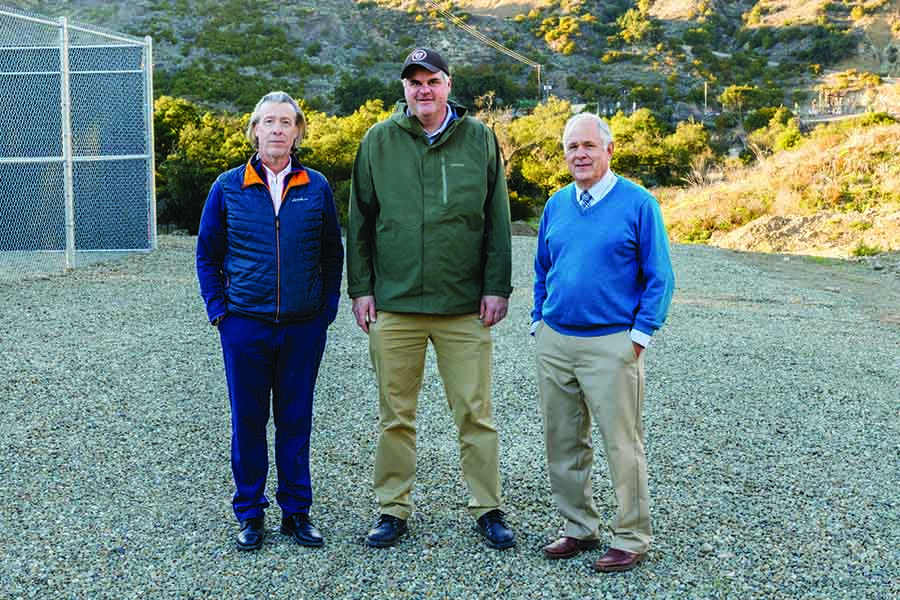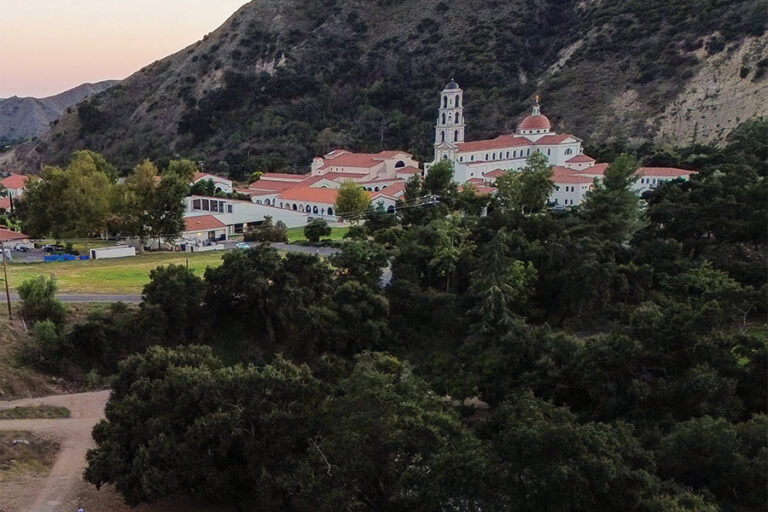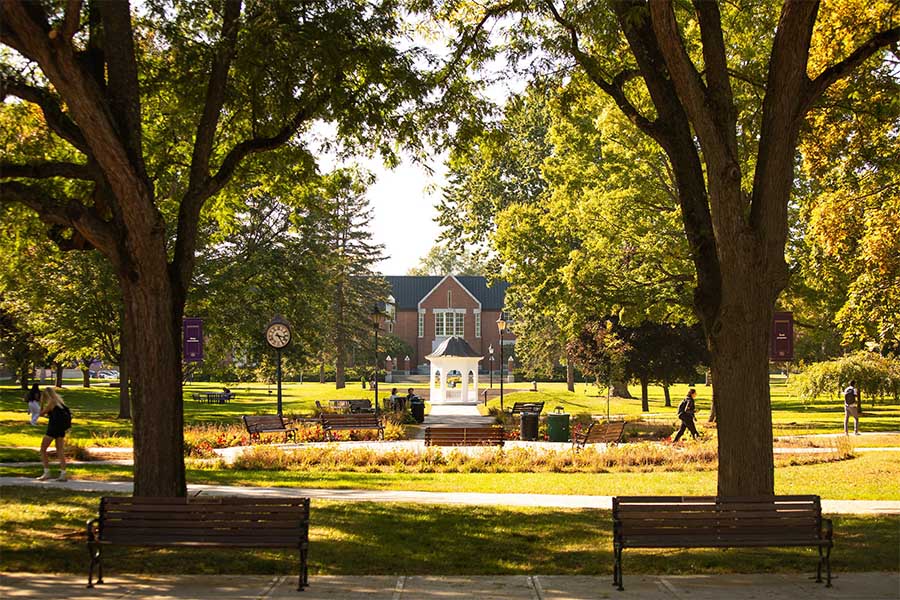A small Catholic college in California announced recently that it had gained energy independence from the California power grid, marking a landmark in the use of alternative energy resources in higher education.
Thomas Aquinas College in Santa Paula revealed in a press release May 7 that the liberal arts school’s 130-acre California campus had become independent of the California energy grid after collaborating with Catholic businesspeople and a local energy corporation to develop a alternative energy source for the college.
Founded in 1971, Thomas Aquinas College has two campuses today, one in Southern California and another in New England. The Southern California campus houses around 350 students and has relied on Southern California Edison for its energy needs in the past.
However, due to increasing costs and frequent power outages, the college sought to create its own long-term alternative power source.

“We thought outside of the box with this plan,” Paul O’Reilly, president of Thomas Aquinas College, told OSV News. “And we will continue to think outside the box as we think about our responsibilities to be lean and efficient and people of good judgment as we look at alternative ways to solve problems, including energy efficiency.”
A few years ago, Thomas Aquinas College faced a major challenge.
Located in an area prone to wildfires, its power supplier would frequently switch off the electricity for up to 72 hours. The company intended to mitigate wildfire risk, but in turn, it proved harmful to campus life and learning, according to Mark Kretschmer, the college’s vice president for operations.
“We were getting hit regularly by the power cuts, and they could have the power off for up to 72 hours, which really disrupted campus life,” Kretschmer told OSV News. “That was one of the driving factors — that we can’t just sit ideally by. The other factor was the increase in price and what was likely to be future price hikes for energy.”
So, the college’s leaders began exploring alternative options. Kretschmer reached out to a friend of the school, Lawrence Youngblood, an electrical engineer whose children attended Thomas Aquinas.
Youngblood and Kretschmer explored a variety of options, including solar panels and wind energy. Ultimately, they settled on a plan that would utilize the resources of neighboring businesses.
“Using solar energy would take acres of land, and then you’d only have power during the day unless you had a battery,” Kretschmer said. “But then we found a plan that uses a resource that’s right here from the oil company wells — that they are providing free of charge to us while we reduce both our carbon footprint and the oil companies’ — all while being able to generate power right here.”
Youngblood and biologist Thomas Kaiser developed a plan to convert the excess natural gas produced by a neighboring oil field into a green energy source through Capstone turbines. Carbon California, the operator of the oil field, agreed to provide the school with the excess natural gas at no cost.
“According to the Air Quality Management District, the Capstone turbine uses the most recent, best available control technology on the market,” Youngblood said in a press release. “Rather than flaring at high emissions, we can burn gas using that turbine’s efficient combustion technology at much lower emissions.”
The college then stores the energy in a Tesla battery it received for free through the state of California’s 2020 Self-Generation Incentive Program.
“The uniqueness of this project is that it utilizes fossil fuels to create renewable energy in a time where fossil fuels are looked at so poorly upon,” Kretschmer said. “This provides an example of what it might look like for now: Natural gas and fossil fuels need to play a part in the search for alternative energy sources; otherwise, we’re going to make a lot of bad decisions by trying to transition things too quickly to solar or wind when our electrical grids aren’t ready for it.”
The project required a significant investment upfront, with the turbine alone costing $4.5 million. However, college leaders stated that Thomas Aquinas will save around $600,000 per year in energy expenses. Thus, the project will pay for itself within six years.
“Ultimately, this project is saving us anywhere between $600,000 and 700,000 a year,” O’Reilly said. “So even though that was a pretty significant investment, we did the calculations and found that the investment would pay for itself within five to six years and then provide us with dependable energy at a much lower cost after that. So, to us, it was a no-brainer.”
While the project is aimed at ensuring the school will no longer depend on the unreliable California power grid, school leaders see it as an opportunity to be good stewards of the school’s resources.
“We believe that we are called to be good stewards of the property that we have been entrusted with, and we want to be responsible for the use of those gifts and for the impact they have on our neighbors,” O’Reilly said. “With respect to the energy project, that’s also the same principle we used.”
College leaders told OSV News that this project was not a direct response to Pope Francis’ frequent calls for sustainability and caring for the environment through his apostolic exhortation “Laudate Deum” and encyclical “Laudato Si’.”
With Pope Francis’ frequent calls to protect the environment, bishops’ conferences, including the U.S. Conference of Catholic Bishops, have renewed their efforts to promote sustainability and ask Catholics to care for the environment.
“Our goal wasn’t to respond to Pope Francis or the USCCB with this energy efficiency,” O’Reilly said. “But it was to be good stewards of what we have received as a gift. We were following the more general principles that we have something that we have to use and we must be thoughtful about not wasting our resources.”
Not only will the energy project save the school money, but leaders are looking for opportunities to sell excess energy back to the state to turn a profit.
The money saved will then be invested back into the school and its mission to offer students need-based scholarships.
“We do not have academic or athletic scholarships but just need based scholarships, and 65% of our students qualify for those,” O’Reilly said. “If we can be efficient in running the campus, then we have more resources to apply to the things that are more central to our mission, such as offering more scholarships and assisting our faculty and staff in southern California since housing is so expensive.”
Even though Thomas Aquinas College is a small institution, O’Reilly and Kretschmer hope that other higher education institutions, whether Catholic or secular, will use their energy initiative as an example of how to be good stewards of their resources.
“Especially with inflation and everything going through the roof, we and other institutions have to figure out how to be creative and use fewer resources,” Kretschmer said.
Read More Colleges
Copyright © 2024 OSV News








